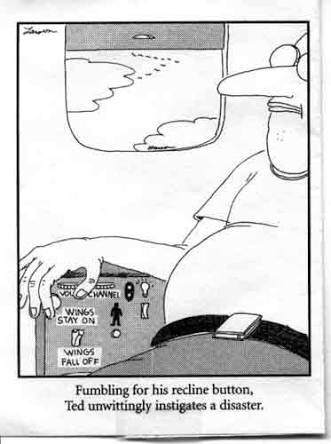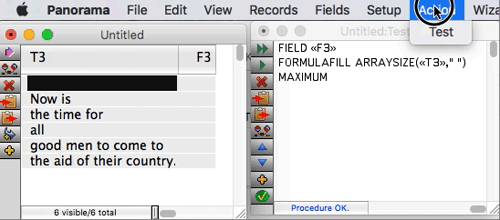No, no, no. I am not submitting my three line test procedure for a code review.
What is actually happening is this.
Make a selection
do things
refine selection
do things
refine selection
and to these last few hundred records, I want to make one last test: I want to see if a field way off yonder has a valid key in it because soon it’s going to be relating to another database.
So my last move is, Select bad references and if the number is greater than 0, tell the user to supply a valid key and don’t go any further.
When everything is correct, the last selection is going to be empty, and it ought to be empty, and then I can proceed to the next steps.
And yes, I do check the result all my selections, and if everybody did that, there would be no need for Panorama to silently override the behavior of an arbitrary subset of its operators, and give mysterious results.
And, n.b., saying “SELECTALL” to restore the functioning of the subset of operators, is not possible in this case.
Of course I can do things differently. I already fixed it.
I’m just telling you: it is not good language design, or UI design, for an interpreter to change the behavior of its built-in operators; and especially without telling you, as it happens. This “feature” was added, to save programmers from the consequences of their not checking the result of their selections. It presumes that the user wants operations to proceed only if the selection yielded positive results; in this case what is being checked is the existence of an error condition, and I want to proceed only if the result is negative.
It’s clear that it’s too late to change it now, but do you see what I’m saying?
Also, did anybody actually get to see the Far Side cartoon I pasted into the last post? It was the whole point of the post. The overenthusiastic censor bot seems to have removed it. It’s the Wings Stay On Wings Fall Off cartoon. And I think you would find that it is entirely fair use, due to being a tiny fraction of the book in which it appeared. The manual excerpt that Mr. Rea quoted is also copyrighted material and the bot didn’t censor that. Hard for me to imagine that Universal Press Syndicate would mind engineers posting Far Side cartoons to each other, and if they did, they need to deal with the Internet.


